Succulents make excellent additions to a garden. Their shapes, colors, flowers, and textures can add variety to any planting bed or container. They can look like stones, be toothed like an alligator, and occasionally morph into monstrosities that defy genetics. Every gardener should have at least one succulent plant. The selections here offer a diverse mix of no-brainers to help you get started without risking failure.
1. Black Rose (Aeonium arboreum 'Zwartkop')
The Black Rose is a powerful contrast against light green or yellow plants. Over time, it develops a thick trunk and may branch into sizable subshrubs that produce foot-long, cone-shaped stems of vivid yellow flowers.
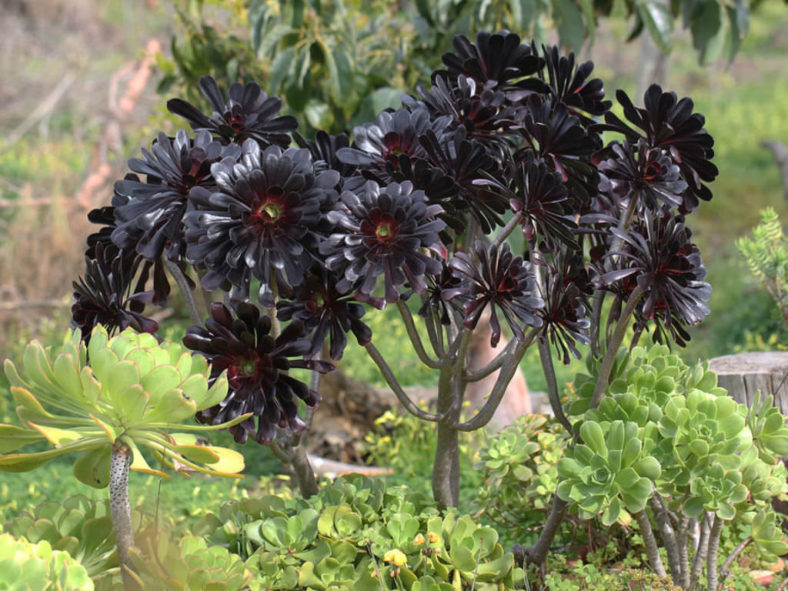
2. Raindrops Echeveria (Echeveria' Rain Drops')
Echeveria is a collection of truly excellent succulents. The availability of dozens of different-colored hybrids makes them the paint-box plants to pair with glass gravel for outstanding potted specimens. However, they look equally impressive in the landscape. Rather than mail order, hand selection is the best way to get the color you have in mind.
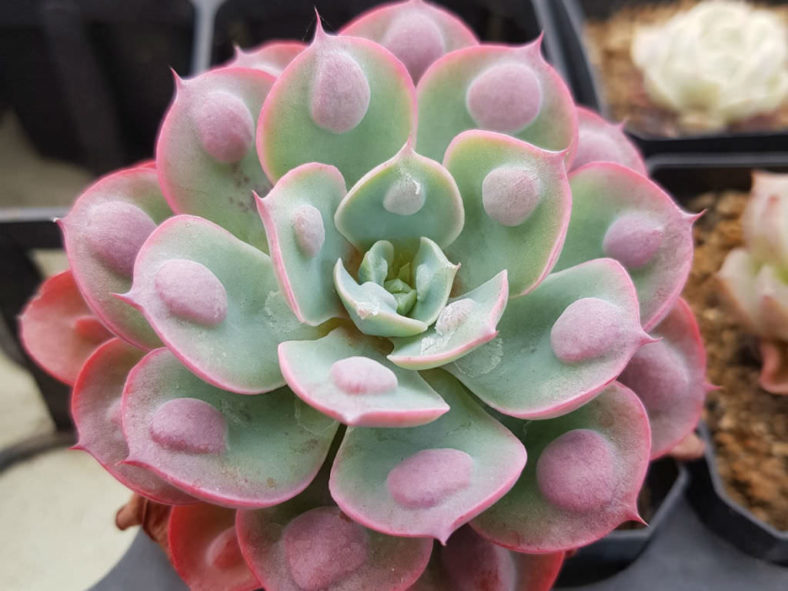
3. Zebra Plant (Haworthiopsis attenuata, formerly known as Haworthia attenuata)
Rub your finger along the leaves of this crocodile of a succulent to feel the unique hard warts that pock the surface. Though small, the Zebra Plant's hard, leathery surface makes it hard to kill, except by overwatering or frost. This plant is a favorite for shallow bowls or bonsai pots, where it offsets freely and fills the container. It blooms on long piano-wire stalks with small, pure white flowers.
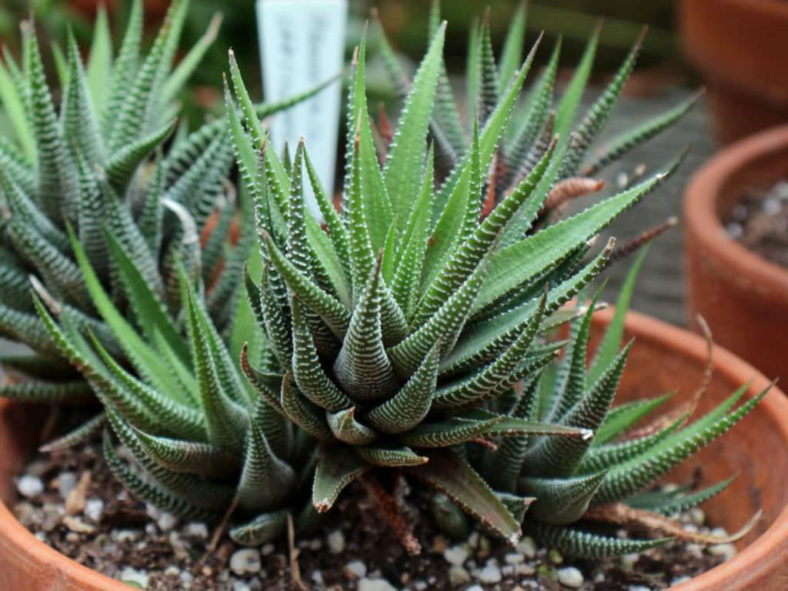
4. Donkey's Tail (Sedum morganianum)
Show children a Donkey's Tail, and they will reach out to pinch the leaves of this unique, vine-like succulent. It is typically grown in a hanging basket where perfect drainage is assured. It also grows well, dangling from a pot on a wall or balcony. This is not a heat lover but a cinch to grow in spots protected from the wind. Give it a shaded location with filtered light for the best results.
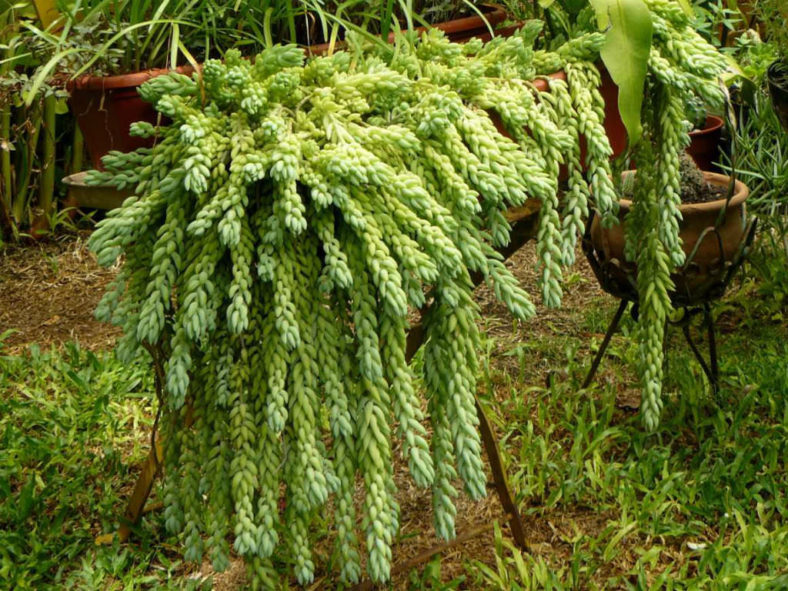
5. Spider Aloe (Aloe humilis)
Fat and stubby, this cute little Aloe blooms just as spectacularly as its larger African relatives. A foot (30 cm) long spike emerges in spring, topped with tubular, coral-red blooms that hummingbirds find irresistible. This hand-sized plant is ideal for low, wide bonsai pots. Its toothy leaves are thick and stiff, so its precise form is always maintained without flopping. Pairing several Spider Aloes with smooth river stones makes a beautiful little grouping.
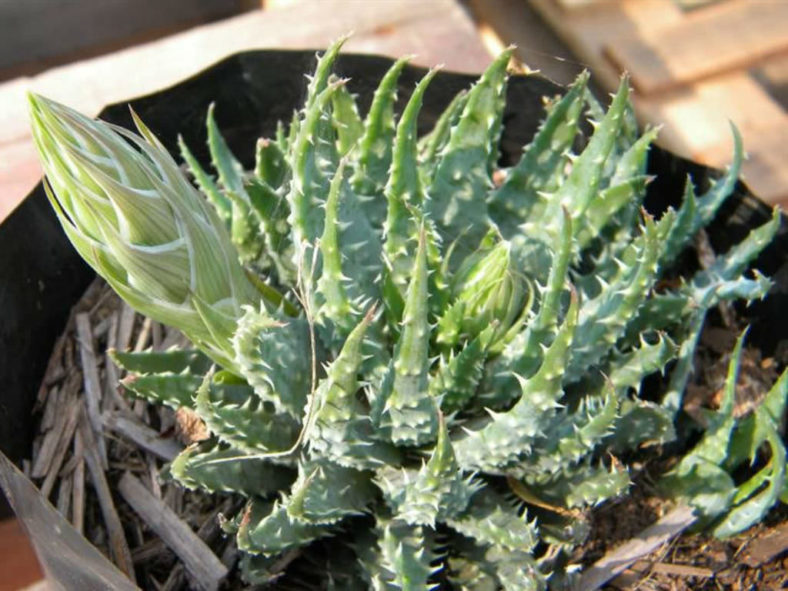
6. Fire Sticks (Euphorbia tirucalli 'Rosea')
The Pencil Tree has been around forever, but the red form is a great design tool for
its fine texture and vivid winter hues. The color results from reduced chlorophyll levels, which stunt growth and keep this succulent small. The most intense color occurs in winter on plants in full sun. This species is more tolerant of ordinary soil than most succulents, so it is often planted alongside moisture-loving plants.
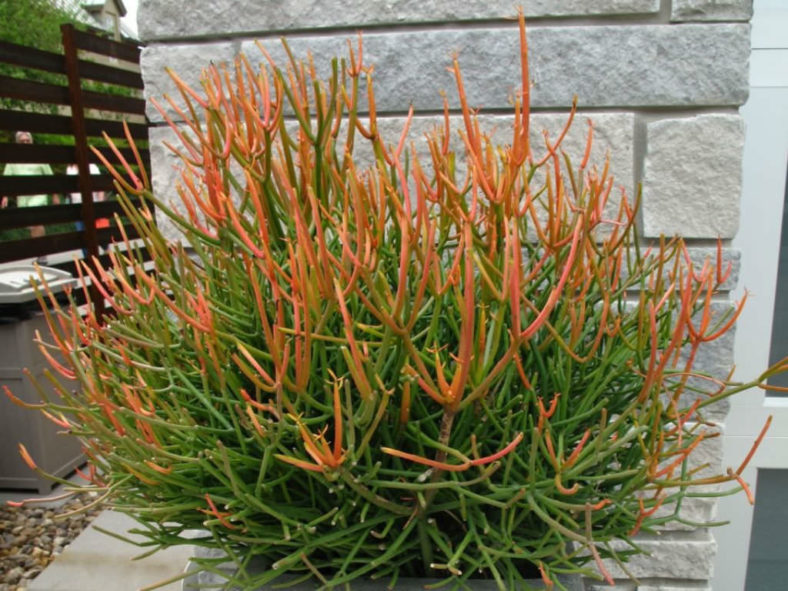
7. Cobweb Houseleek (Sempervivum arachnoideum)
This cold-hardy succulent is one of the cutest small rosettes. It stands up to winter cold because it originates in the high mountains of Europe, where plants thrive in decomposing granite pockets on sun-drenched cliffs. Cobweb Houseleek is named for the spider-like appearance it creates when stems arch outward between the leaves to bear offsets. These offsets are easy to sever and root into new plants. If you want to try this one, make sure it has good drainage.
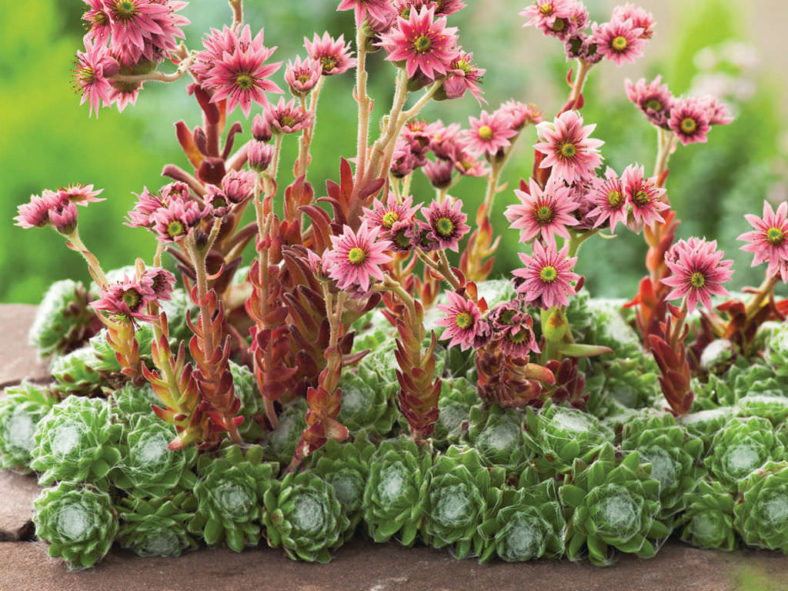
8. Queen Victoria Agave (Agave victoriae-reginae)
A mature specimen of the small Queen Victoria Agave can cost as much as a thousand dollars. But like all Agaves, it blooms once at the end of its life. Slow growth and exquisite beauty make this a prime single specimen. A mature plant is roughly the size of a volleyball and rock-hard, while its leaves are edged in white lines, which lend a unique graphic quality to the plant.
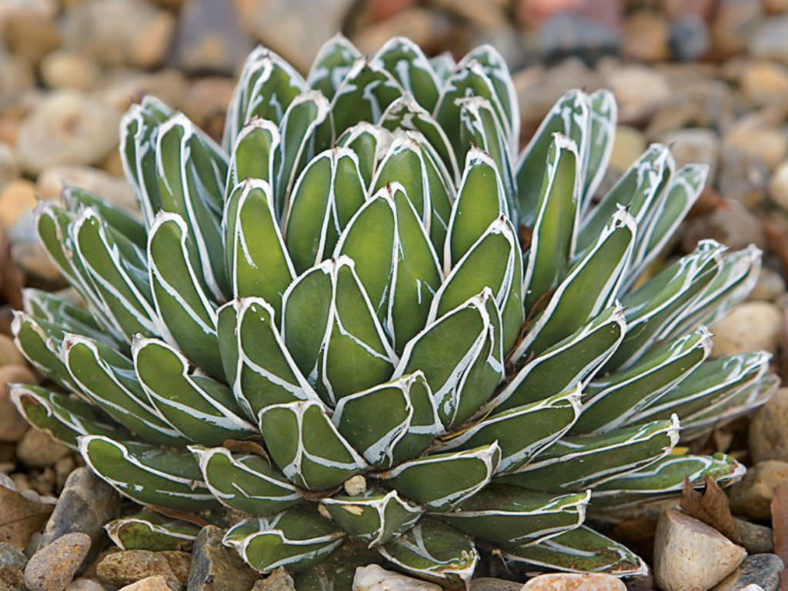
9. Paddle Plant (Kalanchoe luciae)
Paddle Plant is the most popular modern succulent due to its whimsical form and intense winter color. Its leaves are flat, like pancakes, layered into an odd rosette. This plant bolts when it blooms, with the center stem elongating into a gangly white stalk. Those sold in nurseries are youngsters raised to the maximum size for immediate use, but they do not last more than a year before bolting, spoiling their looks. Once the Paddle Plant flowers, cut off the stem and give the remaining plant good care. It will soon produce many new offsets that can be plucked off and rooted.
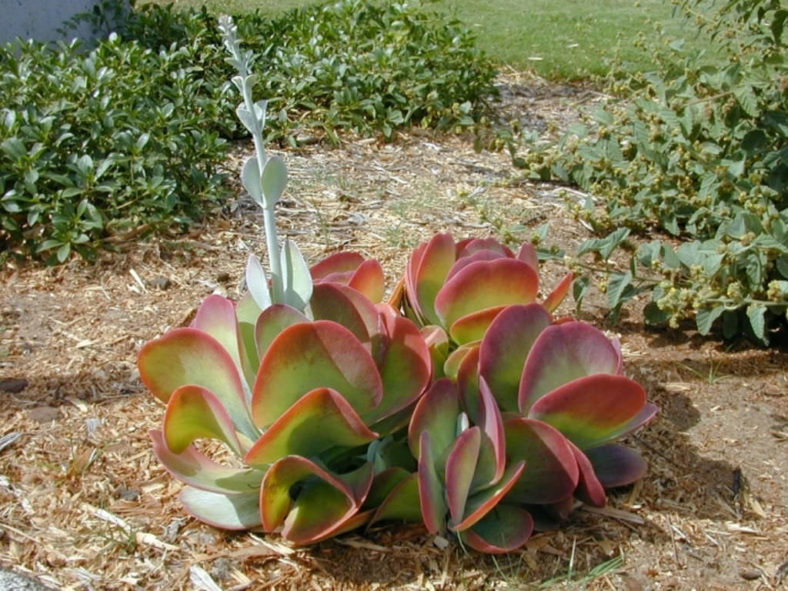
10. Blue Chalk Sticks (Curio talinoides var. mandraliscae)
No succulent rivals this one for accurate blue coloring. It is favored for mixed-succulent bowls, where it pops against yellow succulents. Blue Chalk Sticks can be shrubby or low spreading, depending on the form you buy and whether you shape them. Leaves are pencil-thin and upright, creating a spiky, fine-textured mass. This is an exceptional choice for unusual forms in windowsill gardens.
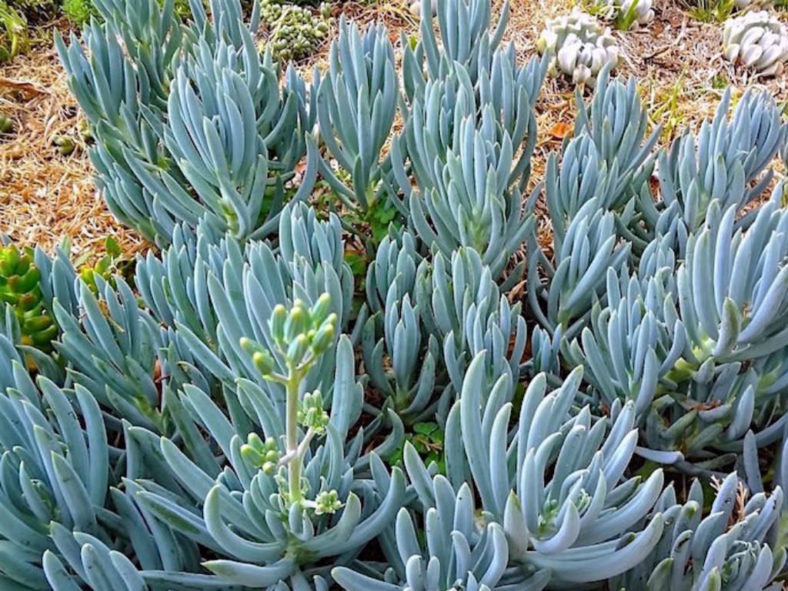
Source: finegardening.com
Links
- Succupedia: Browse succulents by Scientific Name, Common Name, Genus, Family, USDA Hardiness Zone, Origin, or cacti by Genus